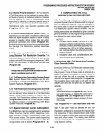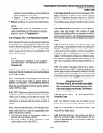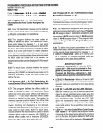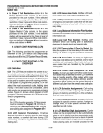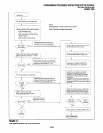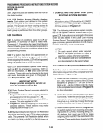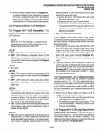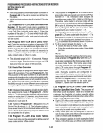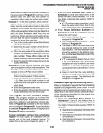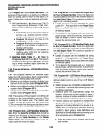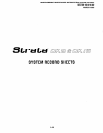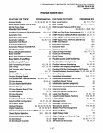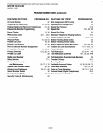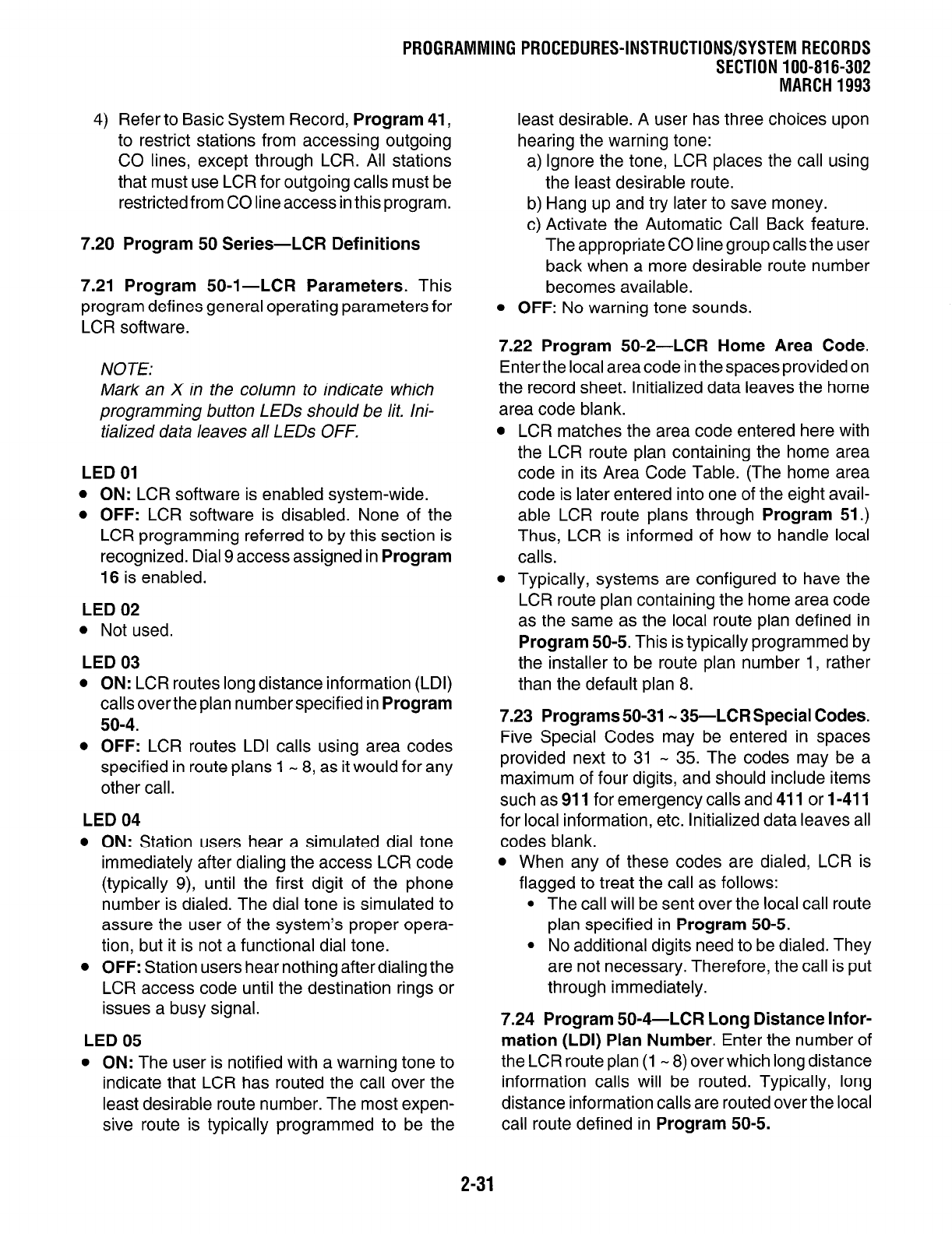
PROGRAMMING PROCEDURES-INSTRUCTIONS/SYSTEM RECORDS
SECTION 100-816-302
MARCH 1993
4) Refer to Basic System Record, Program 41,
to restrict stations from accessing outgoing
CO lines, except through LCR. All stations
that must use LCR for outgoing calls must be
restricted from CO line access in this program.
7.20 Program 50 Series-LCR Definitions
7.21 Program 50-1- LCR Parameters. This
program defines general operating parameters for
LCR software.
NOTE:
Mark an X in the column to indicate which
programming button LEDs should be lit. Ini-
tialized data leaves all LEDs OFF.
LED 01
l
ON: LCR software is enabled system-wide.
l
OFF: LCR software is disabled. None of the
LCR programming referred to by this section is
recognized. Dial 9 access assigned in Program
16 is enabled.
LED 02
l
Not used.
LED 03
l
ON: LCR routes long distance information (LDI)
calls over the plan number specified in Program
50-4.
l
OFF: LCR routes LDI calls using area codes
specified in route plans 1 - 8, as it would for any
other call.
LED 04
l
ON: Station users hear a simulated dial tone
immediately after dialing the access LCR code
(typically 9), until the first digit of the phone
number is dialed. The dial tone is simulated to
assure the user of the system’s proper opera-
tion, but it is not a functional dial tone.
l
OFF: Station users hear nothing after dialing the
LCR access code until the destination rings or
issues a busy signal.
LED 05
l
ON: The user is notified with a warning tone to
indicate that LCR has routed the call over the
least desirable route number. The most expen-
sive route is typically programmed to be the
least desirable. A user has three choices upon
hearing the warning tone:
a) Ignore the tone, LCR places the call using
the least desirable route.
b) Hang up and try later to save money.
c) Activate the Automatic Call Back feature.
The appropriate CO line group calls the user
back when a more desirable route number
becomes available.
l
OFF: No warning tone sounds.
7.22 Program 50-2-LCR Home Area Code.
Enter the local areacode in the spaces provided on
the record sheet. Initialized data leaves the home
area code blank.
LCR matches the area code entered here with
the LCR route plan containing the home area
code in its Area Code Table. (The home area
code is later entered into one of the eight avail-
able LCR route plans through Program 51.)
Thus, LCR is informed of how to handle local
calls.
Typically, systems are configured to have the
LCR route plan containing the home area code
as the same as the local route plan defined in
Program 50-5. This is typically programmed by
the installer to be route plan number 1, rather
than the default plan 8.
7.23 Programs50-31 w 35-LCR Special Codes.
Five Special Codes may be entered in spaces
provided next to 31
- 35. The codes may be a
maximum of four digits, and should include items
such as 911 for emergency calls and 411 or 1-411
for local information, etc. Initialized data leaves all
codes blank.
l
When any of these codes are dialed, LCR is
flagged to treat the call as follows:
l
The call will be sent over the local call route
plan specified in Program 50-5.
l
No additional digits need to be dialed. They
are not necessary. Therefore, the call is put
through immediately.
7.24 Program 50-4-LCR Long Distance Infor-
mation (LDI) Plan Number. Enter the number of
the LCR route plan (1 - 8) over which long distance
information calls will be routed. Typically, long
distance information calls are routed over the local
call route defined in Program 50-5.
2-31



